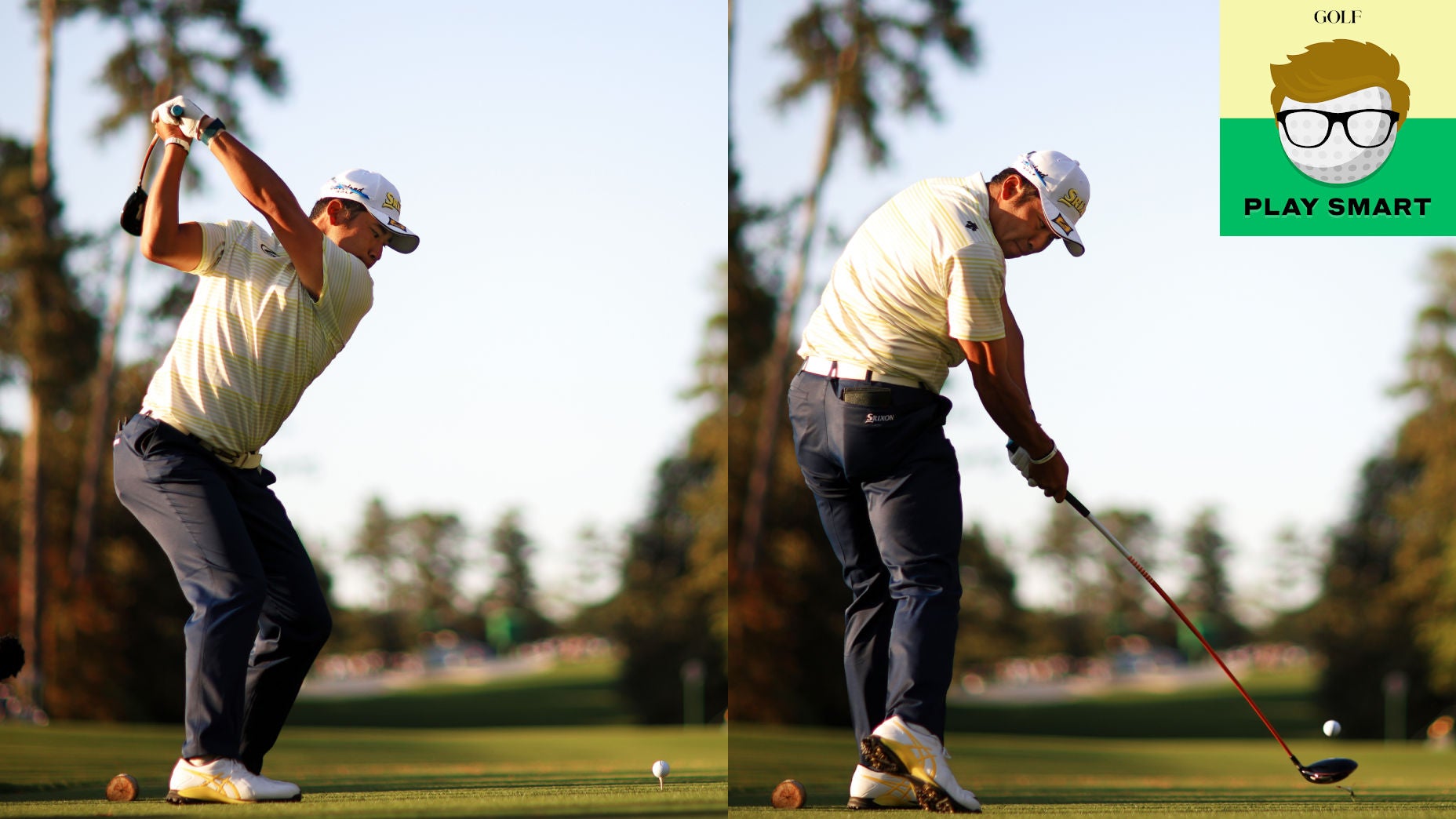Welcome to Play Smart, a game-improvement column that drops every Monday, Wednesday, and Friday from Director of Game Improvement content Luke Kerr-Dineen to help you play smarter, better golf.
Everybody’s golf swing includes a backswing, but Hideki Matsuyama’s is one-of-a-kind. There’s nothing unusual about the backswing itself, or about his downswing. It’s the moment between the two that’s unique. Rather that swinging in one continuous motion, Hideki gets to the top and makes a pronounced pause. It’s the product of him trying to smooth his transition while continuing to swing hard, and Hideki says he doesn’t even notice he does it.
And now he’s got a green jacket to show for it. I was curious about how a pause that pronounced actually affected the science of Hideki’s golf swing — and whether you should consider a more pronounced pause between backswing and downswing in your golf swing.
So, I put in a few questions to renowned golf biomechanist professor Dr. Sasho Mackenzie, who works directly with a number of GOLF Top 100 Teachers and who you can follow on Twitter right here, to learn more.
Luke Kerr-Dineen: So Sasho, in the past we’ve talked about counter-movements in the golf swing. How does a backswing pause like Hideki’s affect counter-movements?
Sasho Mackenzie: The backswing in golf is a counter-movement and serves a similar purpose to pulling the arm back before a throw or squatting before a jump. Similar to a throw and jump, a golf swing will generate more speed when the muscles contract with more force on the downswing. A fast backswing requires the downswing muscles to forcefully contract harder just to stop the backswing motion. If there is no pause, then the downswing sequence is initiated with the muscles forcefully contracting and primed to generate power. A slower backswing, or longer pause, means your downswing muscles don’t need to forcefully contract as much, which will rob the downswing muscles of a head start in reaching high levels of force.
LKD: As a biomechanist, what do you see and think when you see Hideki pause at the top of his golf swing?
SM: I wonder if there could be benefits to a pause from a control perspective. At the start of the backswing golfers know somewhat how they would like to execute the downswing and deliver the club at impact. But in for them to get the impact conditions they desire, their backswing needs to get into a god position first. Arguably, a slow and deliberate transition makes it easier to finish the backswing with the club in the intended position. It’s like placing a ball on a golf tee: I need to pause slightly in order to make sure I do it, because it’s such a precise movement. However, there is plenty of empirical evidence that shoots holes in this hypothesis. For example, Matt Fitzpatrick, who is on the opposite end of the transition speed spectrum as Hideki, hit 88% of his fairways at Augusta this year while averaging 298 yards off the tee. Hideki hit 64% of his fairways and averaged 288 yards en route to the Green Jacket.
LKD: So it sounds like there might be some benefits to taking a longer pause at the top of your backswing.
Sasho Mackenzie: Yes. While a faster backswing and more dynamic transition can lead to more clubhead speed, it can also result in a disruption to the transition sequence, which can negate any potential gains. A faster backswing will not help with clubhead speed if the hips freeze, while wrist uncocking leads the way into the downswing. A golfer’s level of coordination, fitness, and amount of practice time will largely dictate how dynamic they can be in transition. Interestingly, my personal swing thought for maximizing ball speed with the driver, is to emulate Hideki’s pause. I never actually pause, but intending to do so seems to give me the needed time to put the club in the correct place, collect myself for a more coordinated transition, and more reliably find the center of the face. Hideki is averaging 115 mph of clubhead speed in 2021. While a longer pause may cost him a few mph of speed, and therefore might lower his probability of success, it is clearly sufficient to win on the PGA Tour. The postures and movements that a golfer finds comfortable (or more automatic) need to be considered when suggesting swing changes. The better a golfer is, the more weight I place on favoring the movements that are comfortable and it becomes my objective to find a movement solution that remains comfortable for the player.
